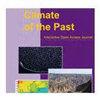古近纪浅海和淡水硅藻土沉积的气候和构造控制因素
IF 3.2
2区 地球科学
Q1 GEOSCIENCES, MULTIDISCIPLINARY
引用次数: 0
摘要
摘要硅藻在碳和硅的循环中发挥着重要作用,因此含硅藻的沉积物是过去气候和环境背景的档案。在浅海和淡水环境中,硅藻颗粒的堆积形成了一种叫做硅藻土的沉积岩。然而,对含硅藻沉积物的全球尺度研究大多集中在深海地点,而对浅海和淡水硅藻土的研究主要集中在区域层面。为了解决这个问题,我们汇编了古近纪(约 66 至约 23 Ma)硅藻土的全球分布情况。这一时期的特点是最初极度温暖,随后是长期冷却,并被称为高热的短期气候事件以及一系列古海洋学和古地理学变化所打断。本资料汇编旨在通过研究气候、构造活动和海洋环流对硅藻土沉积的影响,确定硅藻生产对古近纪环境波动的反应。虽然气候因素似乎有间接影响,但我们的研究表明,古地理和古海洋学变化是古近纪硅藻土沉积的主要驱动因素,特别是从早始新世气候最适宜期(约 53 至约 49 Ma)开始。事实上,我们的汇编表明,在 ~46 Ma 到 ~43 Ma 之间,大陆海域没有硅藻土沉积,而硅藻土直到 ~43.5 Ma 才开始在开阔洋环境中积累。此外,我们还观察到区域气候和火山构造活动对淡水硅藻土的沉积产生了影响。本文章由计算机程序翻译,如有差异,请以英文原文为准。
Climatic and tectonic controls on shallow marine and freshwater diatomite deposition through the Palaeogene
Abstract. Diatoms play a major role in the carbon and silicon cycles, and thus diatom-bearing sediments represent an archive of past climatic and environmental settings. In shallow marine and freshwater environments, the accumulation of diatom frustules forms a sedimentary rock called diatomite. However, most global scale studies of diatom-bearing sediments focus on deep-sea sites, whereas shallow marine and freshwater diatomites are studied mainly at a regional level. To address this problem, we present a global scale compilation of diatomite occurrences spanning the Palaeogene (~66 to ~23 Ma). This period was characterized by initial extreme warmth followed by a prolonged cooling, disrupted by short-term climatic events called hyperthermals, and by a number of palaeoceanographic and palaeogeographic changes. The aim of this compilation is to determine the response of diatom production to Palaeogene environmental fluctuations, by examining the influence of climate, tectonic activity and ocean circulation on diatomite deposition. Although climatic factors appear to have had an indirect impact, our study suggests that palaeogeographic and palaeoceanographic changes were key drivers of diatomite deposition during the Palaeogene, particularly from the Early Eocene Climatic Optimum (~53 to ~49 Ma) onwards. In fact, our compilation suggests the absence of diatomite deposition in epicontinental seas between ~46 and ~43 Ma, while diatomites do not begin to accumulate in open ocean environments until ~43.5 Ma. Moreover, we observe that regional climate and volcano–tectonic activity have had an impact on the deposition of freshwater diatomites.
求助全文
通过发布文献求助,成功后即可免费获取论文全文。
去求助
来源期刊

Climate of The Past
地学-气象与大气科学
CiteScore
7.40
自引率
14.00%
发文量
120
审稿时长
4-8 weeks
期刊介绍:
Climate of the Past (CP) is a not-for-profit international scientific journal dedicated to the publication and discussion of research articles, short communications, and review papers on the climate history of the Earth. CP covers all temporal scales of climate change and variability, from geological time through to multidecadal studies of the last century. Studies focusing mainly on present and future climate are not within scope.
The main subject areas are the following:
reconstructions of past climate based on instrumental and historical data as well as proxy data from marine and terrestrial (including ice) archives;
development and validation of new proxies, improvements of the precision and accuracy of proxy data;
theoretical and empirical studies of processes in and feedback mechanisms between all climate system components in relation to past climate change on all space scales and timescales;
simulation of past climate and model-based interpretation of palaeoclimate data for a better understanding of present and future climate variability and climate change.
 求助内容:
求助内容: 应助结果提醒方式:
应助结果提醒方式:


